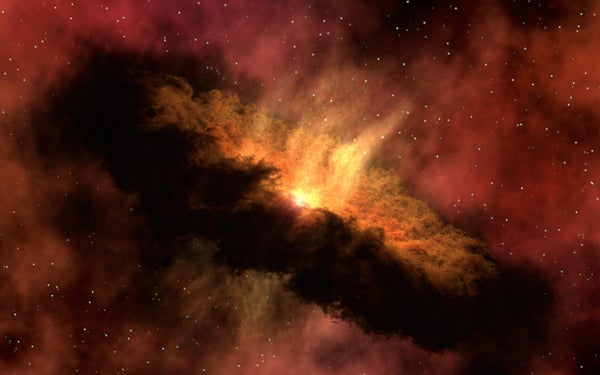This article was published in Scientific American’s former blog network and reflects the views of the author, not necessarily those of Scientific American
The total eclipse unfolding today will probably be one of the best documented astronomical events ever. This is due to our collective information sharing abilities and our understanding of science. We know why the sky will darken and we were able to predict it so we've had time for the excitement to build and make plans for this to be a social experience. We also know the eclipse is an event unto itself and not reflective of the state of affairs anywhere in the world. This hasn't always been the case. Many accounts of eclipses have been preserved through religious and political records, which often have their own agenda. As a result, not every eclipse recorded may have actually occurred and not every eclipse that has happened may have been recorded.
For example, while the Chinese astronomical record is among the most historically thorough, there are a few instances of recorded eclipses that did not happen. Eclipse sightings were mandated to be reported to the emperor's court. In cases where the ruling family was unpopular eclipses were one way that officials let emperors know their actions were viewed as unfavorable. This principle of "indirect criticism" was embedded in Confucianism and means that there may have been a few recorded eclipses that were more allegory than reality. Similarly, for popular rulers observed eclipses may not have been reported so as to not improperly criticize the emperor.
As a symbol of power, eclipses have been tied to births and deaths of rulers even when they needed to be explicitly crafted to do so. In 1133 a high-magnitude eclipse was observed in England and northwestern Europe which many believed foretold the death of Henry I of England. (He died in 1135.) Henry, for his part, is alleged to have seen the eclipse during his crossing of the Channel to Normandy and believed a great event would soon unfold. He did not ascribed that event to himself. Nonetheless, at least one record incorrectly listed the eclipse as occurring in 1135 to help the timeline match up.
On supporting science journalism
If you're enjoying this article, consider supporting our award-winning journalism by subscribing. By purchasing a subscription you are helping to ensure the future of impactful stories about the discoveries and ideas shaping our world today.
And then there are the instances where eclipses are assimilated into record: In December 1348, a plague swept through Ragusa. While there is no record of an eclipse during this time, popular tradition came to hold that the plague had been preceded by a eclipse in totality.
People have been looking at the skies for a very long time. The medieval European celestial records are among the most complete. Supplied by clerics, they are the fullest and most continuous records we have, but they were likely a secondary goal. These men were studying the skies was due to a need for data to predict and plan for Christian religious festivals--a timeline known as the Easter Tables.
The Chinese, who were dedicated astronomers, have an even better record than the Europeans. The annals of the Former Han dynasty, which covered a period of BC 206 to AD 9, listed 51 of the 98 observable eclipses for this period. Some of these events would have had a lower visibility, so their existence within the record has been taken by researchers to indicate an intentional documentation by astronomers, meaning that these early scientists were looking for these events which might have otherwise been overlooked.
Researchers believe that we may have an instance of an eclipse in Pueblo Rock Art as well. A petroglyph was discovered in 1992 in Chaco Canyon, New Mexico that depicts a circle with streamers that researchers believe is reminiscent of a corona. The Chacoans lived in the area between AD 900 and 1150. An eclipse occurred in this area in July 1097 where the sun's corona would have been visible--which is correlated from other independent records. The Great Houses of Chaco, which were built after 1100 AD, were monumental structures designed for viewing sunset and sunrise at the winter and summer solstices, which anthropologists believe indicted a renewed interest in solar activity following the eclipse.
With so many faithful eyes to the sky, researchers have been optimistic about using references to eclipses in the written record as chronological markers. However, the cultural interpretation and response to eclipses is problematic. Throughout much of history, eclipses were viewed as omens. When viewed as a portent, it's easy to understand why eclipses may be represented in specific ways, as it may help manipulate a desired outcome.
How did you "celebrate" the eclipse? Comments have been disabled on Anthropology in Practice, but you can always join the community on Facebook.
--
Referenced:
Henige, David (1976). Day was of Sudden Turned into Night: On the Use of Eclipses for Dating Oral History. Comparative Studies in Society and History, 18(4): 476-501.
--
You might also like:
Why is the "Tears of Joy" Emoji Everywhere?
Identity and Meaning in Derby Hats
Our Public Affair with Food Porn
